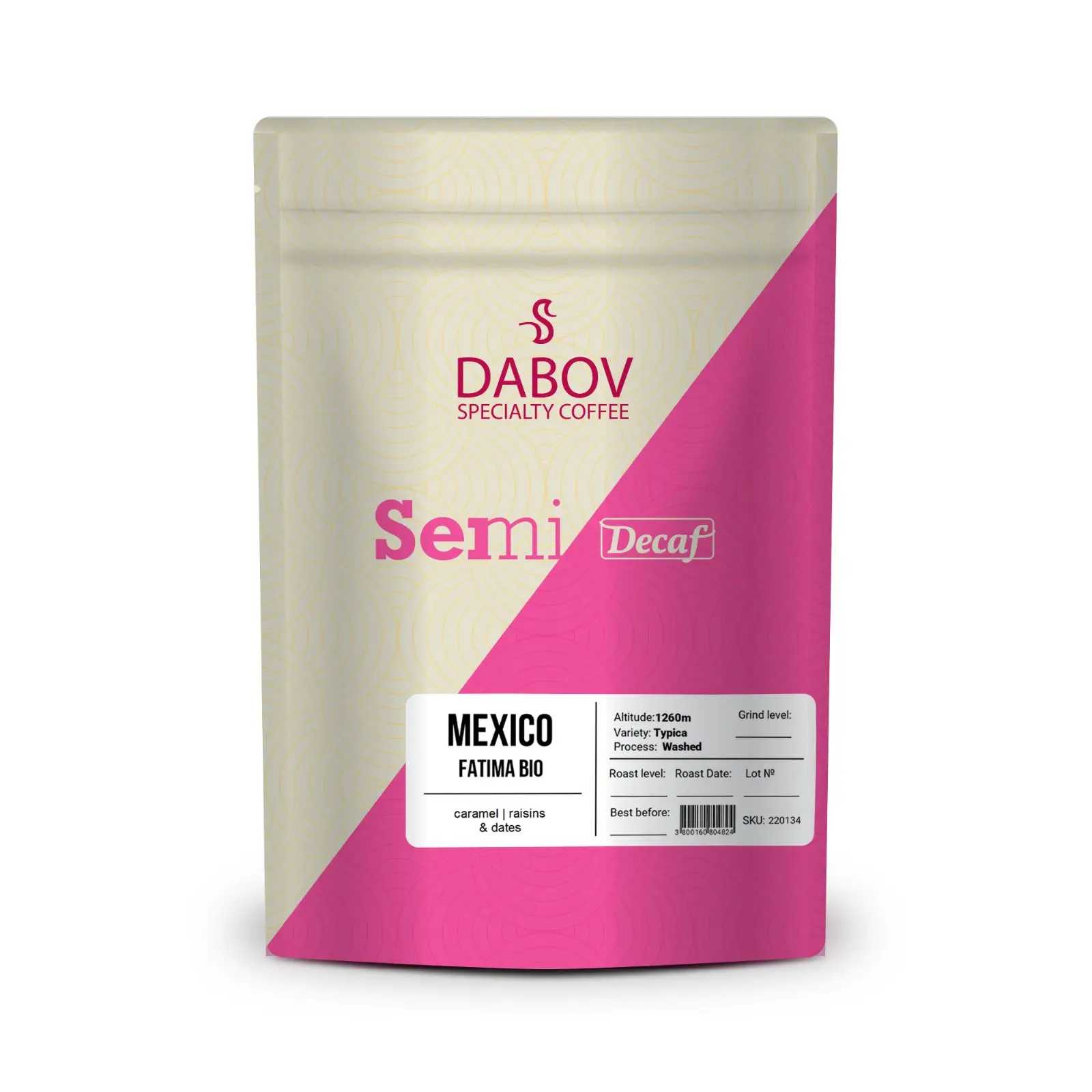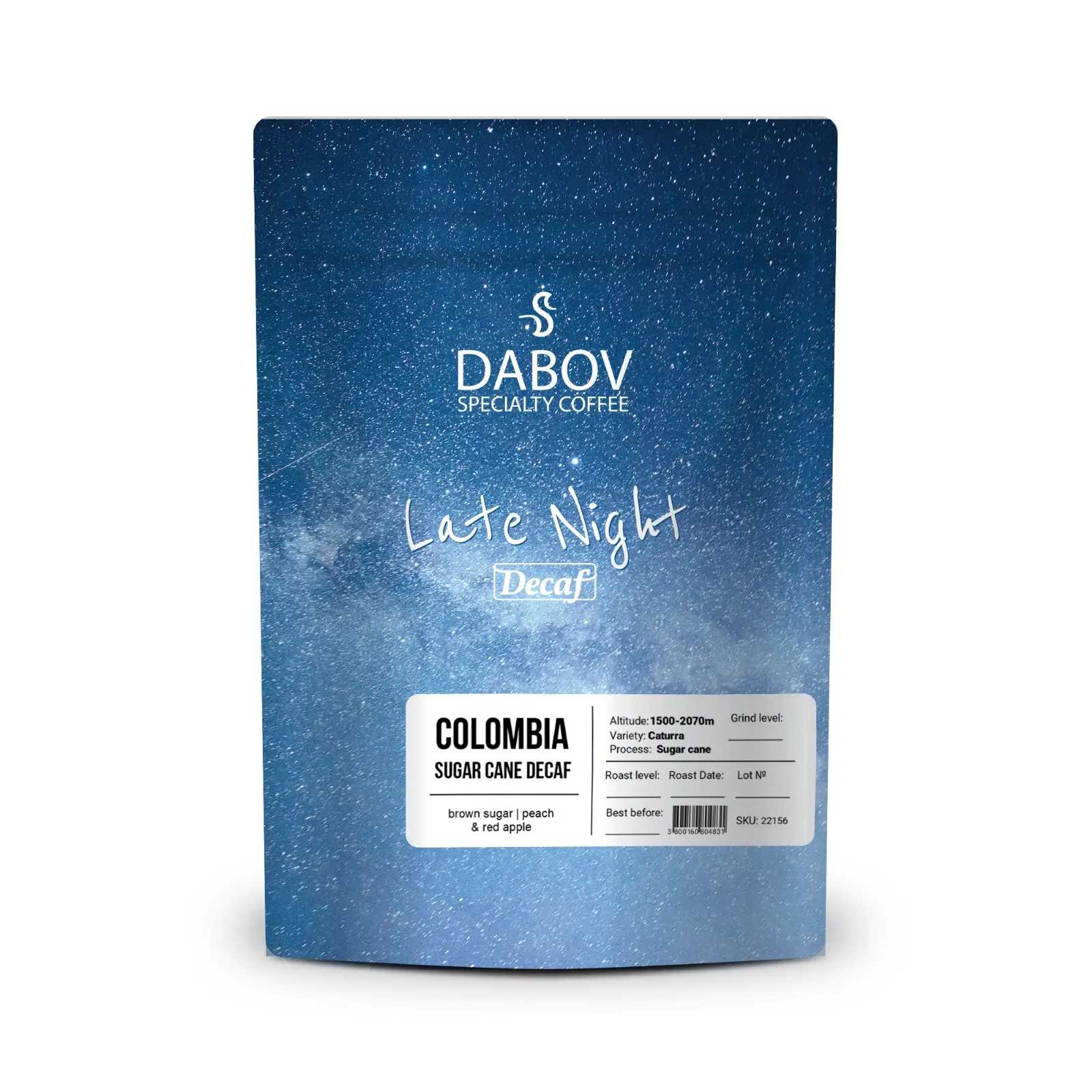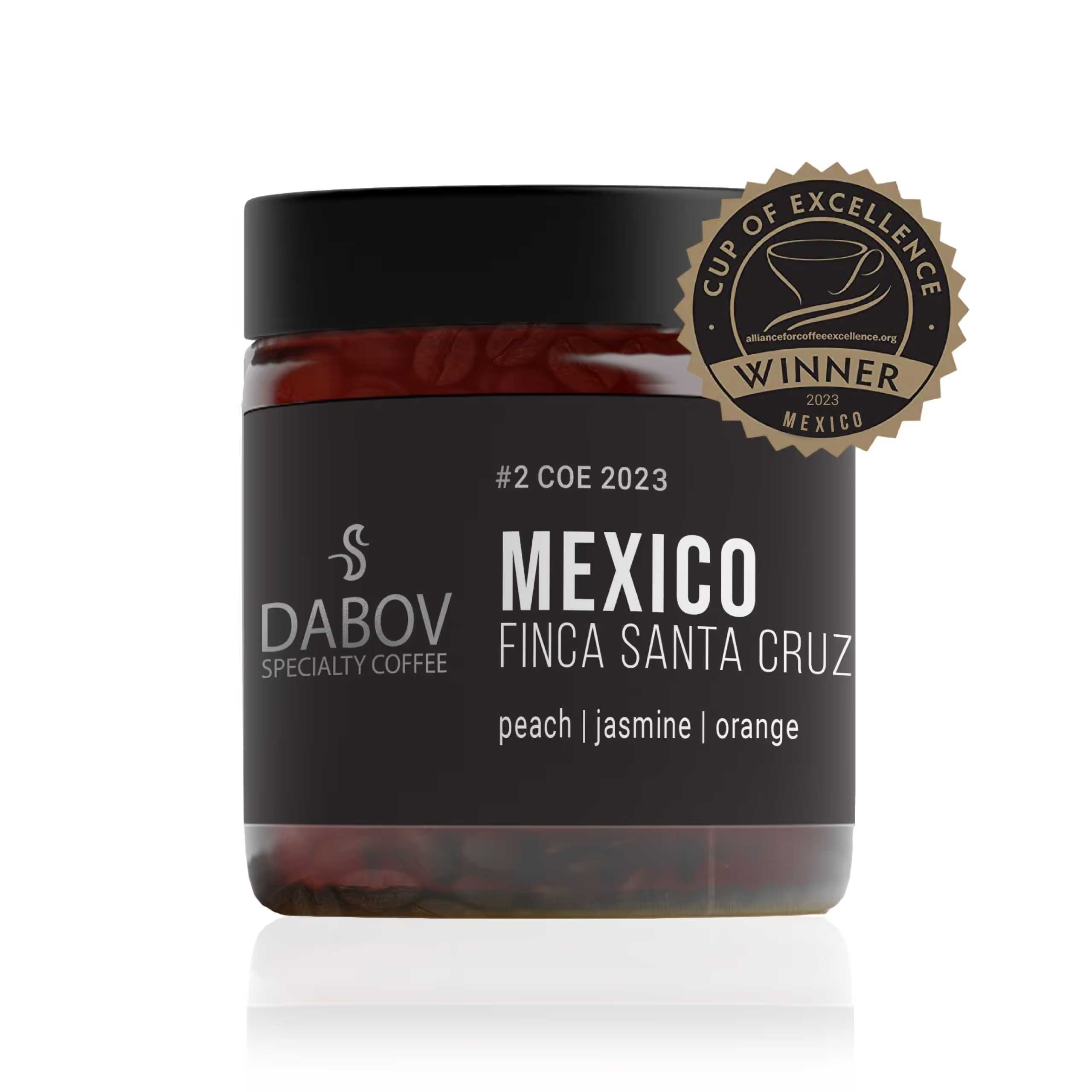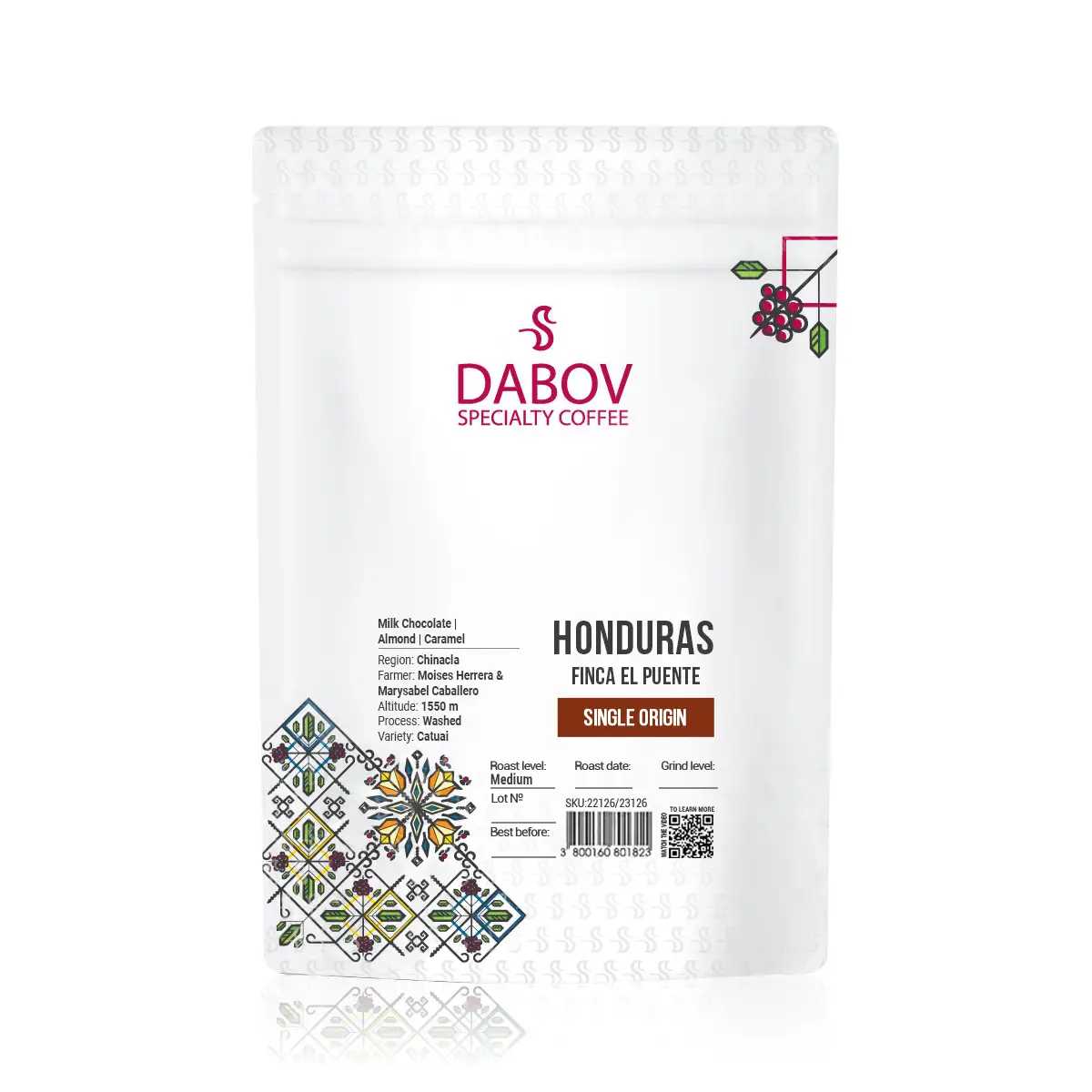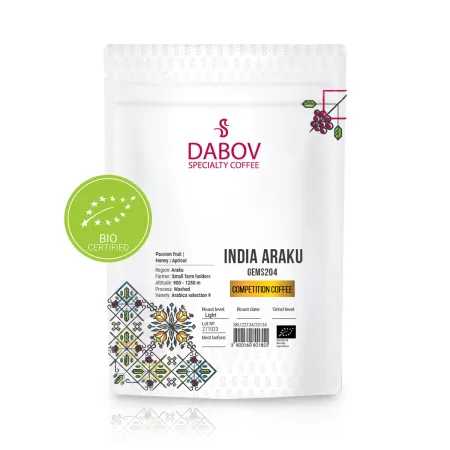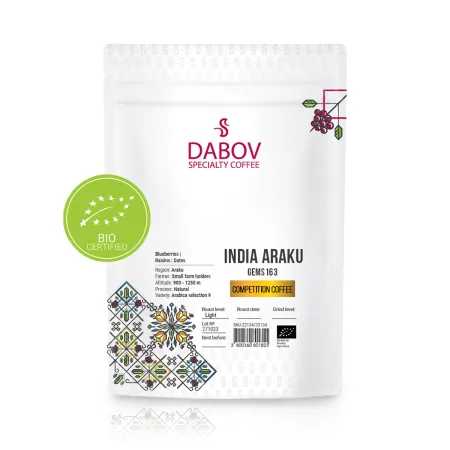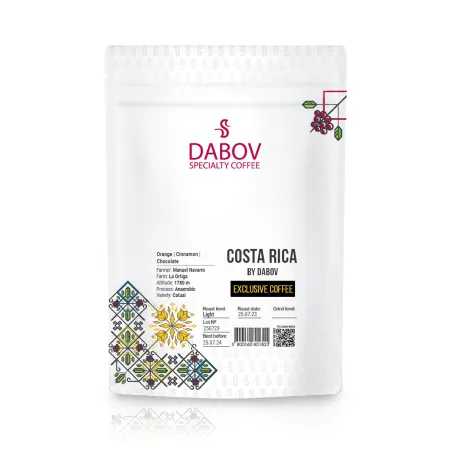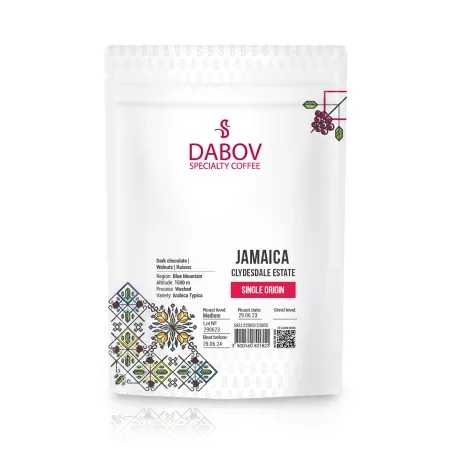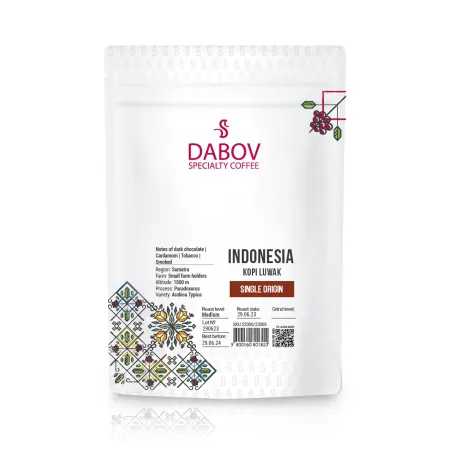The Coffee Flavor Wheel A Tool for Tasting Mastery
Have you ever sipped a cup of coffee and wondered about the complexities of its flavors? The Coffee Flavor Wheel is a revolutionary tool designed for coffee enthusiasts and professionals alike. This guide will take you through the ins and outs of coffee tasting, from understanding the wheel's components to mastering advanced tasting techniques. You'll learn how to articulate unique flavors, enhance your tasting skills, and appreciate the science behind your favorite brews. Whether you're a novice or an expert, this article is your key to unlocking a flavorful coffee experience. Dive into the world of coffee tasting mastery with us!
Coffee, once a simple morning ritual, has evolved into a complex and nuanced experience for enthusiasts and professionals alike. As the specialty coffee industry continues to grow, so does the need for a deeper understanding of the intricate flavors that dance across our palates with each sip. Enter the coffee flavor wheel – a revolutionary sensory tool that has transformed the way we perceive, describe, and appreciate the diverse world of coffee flavors.
Introduction
The art of coffee tasting, much like wine tasting, has become a sophisticated practice that requires skill, knowledge, and a refined palate. As coffee lovers seek to explore the vast landscape of flavors offered by different beans, origins, and brewing methods, the importance of understanding and articulating these flavors has never been more critical. This is where the coffee flavor wheel comes into play, serving as an indispensable guide for both novices and experts in their quest to master the intricacies of coffee tasting.
The coffee flavor wheel is not just a colorful diagram; it's a comprehensive sensory tool designed to assist coffee drinkers in identifying and categorizing the myriad flavors present in their cup. By providing a structured approach to flavor identification, the wheel helps tasters move beyond vague descriptors like "good" or "strong" to a more nuanced vocabulary that can pinpoint specific taste experiences. This tool has become the cornerstone of professional cupping sessions and has empowered countless coffee enthusiasts to elevate their appreciation of this beloved beverage.
Understanding the Coffee Flavor Wheel
What is a Coffee Flavor Wheel?
The coffee flavor wheel is a visual representation of the vast array of flavors that can be detected in coffee. Developed by the Specialty Coffee Association (SCA) in collaboration with World Coffee Research, this tool is the result of decades of sensory science and industry expertise. The wheel serves as a standardized language for describing coffee flavors, allowing for consistent communication among professionals and enthusiasts alike.
At its core, the coffee flavor wheel is a circular diagram that organizes flavors into hierarchical categories. Starting from the center with broad taste categories, it branches outward into increasingly specific flavor notes. This structure allows tasters to begin with general impressions and gradually refine their observations to pinpoint exact flavor descriptors. The wheel's design is not arbitrary; it's based on the chemical composition of coffee and how different compounds interact to create the flavors we perceive.
The creation of the coffee flavor wheel was a monumental undertaking that involved sensory scientists, coffee professionals, and linguists. They worked together to create a tool that is not only scientifically accurate but also intuitive and accessible to users of varying expertise levels. The wheel has undergone several revisions since its inception to keep pace with advancements in coffee science and changes in consumer preferences.
Components of the Coffee Flavor Wheel
The coffee flavor wheel is divided into several main sections, each representing a broad category of flavors commonly found in coffee. These categories include fruity, floral, sweet, nutty/cocoa, spices, roasted, and other. Within each of these broad categories, the wheel further subdivides into more specific flavor notes, allowing for incredibly detailed descriptions of coffee profiles.
For example, under the 'fruity' category, you'll find subcategories like berry, dried fruit, and citrus fruit. These subcategories then branch out even further – berry, for instance, includes specific descriptors such as blackberry, raspberry, and blueberry. This level of detail enables tasters to articulate the subtle nuances that distinguish one coffee from another.
The wheel's color coding is another crucial component, with related flavors grouped in similar hues. This visual organization helps tasters quickly navigate the wheel and make connections between similar flavor profiles. The progression of colors is not random; it's designed to reflect the relationship between different flavor compounds and how they're perceived by our taste buds and olfactory senses.
Understanding the structure and components of the coffee flavor wheel is essential for its effective use. It's not just about memorizing flavor descriptors but about developing a systematic approach to tasting that allows for consistent and accurate flavor identification. As tasters become more familiar with the wheel, they often find that their ability to detect and describe flavors improves dramatically, opening up a whole new dimension of coffee appreciation.
The Science of Coffee Flavor Profiling
How Coffee Flavor Profiling Works
Coffee flavor profiling is a complex process that involves all of our senses, particularly smell and taste. When we taste coffee, volatile compounds are released into the air, which we detect through our olfactory system. Simultaneously, our taste buds pick up basic tastes like sweetness, bitterness, and acidity. The combination of these sensory inputs creates the overall flavor experience we associate with coffee.
The coffee flavor wheel aids in this process by providing a structured framework for organizing and describing these sensory experiences. It helps tasters move from general impressions to specific flavor notes in a logical and consistent manner. For example, a taster might first identify a fruity note, then narrow it down to citrus, and finally pinpoint it as a distinct lemon flavor.
Scientifically, the process of flavor profiling involves the detection and interpretation of hundreds of chemical compounds present in coffee. These compounds, which include organic acids, sugars, and aromatic molecules, interact in complex ways to create the unique flavor profile of each coffee. The flavor wheel simplifies this complexity by grouping related flavors and providing a common language for describing them.
Factors Influencing Coffee Flavors
The flavors we detect in coffee are influenced by a multitude of factors, starting from the coffee plant's cultivation and extending all the way to the final brewing method. Understanding these factors is crucial for anyone looking to master coffee tasting and make the most of the flavor wheel.
Origin plays a significant role in determining a coffee's flavor profile. Factors such as soil composition, altitude, climate, and surrounding vegetation all contribute to the development of flavor compounds in coffee beans. For instance, coffees grown at high altitudes often exhibit brighter acidity and more complex flavor profiles due to slower maturation of the coffee cherries.
Processing methods also have a profound impact on flavor. The three main processing methods – washed, natural, and honey – each impart distinct characteristics to the coffee. Washed coffees tend to have cleaner, brighter flavors with pronounced acidity. Natural processed coffees often exhibit fruitier, more complex flavor profiles with a heavier body. Honey processed coffees fall somewhere in between, offering a balance of clean acidity and fruity sweetness.
Roasting is another critical factor in flavor development. During the roasting process, chemical reactions occur that transform the raw green coffee beans into the aromatic brown beans we're familiar with. The degree of roast significantly affects the flavor profile, with lighter roasts generally preserving more of the bean's original flavors and darker roasts developing more roasted, caramelized notes.
Finally, brewing methods can accentuate or mute different flavor aspects of the coffee. For example, immersion methods like French press tend to produce a full-bodied cup with rich, bold flavors, while pour-over methods can highlight the coffee's delicate nuances and bright acidity.
By understanding these factors and using the coffee flavor wheel as a guide, tasters can begin to appreciate the intricate relationship between a coffee's origin, processing, roasting, brewing, and its final flavor profile. This knowledge not only enhances the tasting experience but also allows for more informed choices when selecting and preparing coffee.
A Coffee Tasting Guide: Using the Flavor Wheel
Preparing for a Coffee Tasting
Proper preparation is key to a successful coffee tasting session. The environment, equipment, and methodology all play crucial roles in ensuring accurate and consistent flavor identification. Here's a comprehensive guide to setting up your tasting:
- Environment: Choose a well-lit, odor-free space. Strong smells can interfere with your ability to detect subtle coffee aromas. Natural light is ideal, as it allows you to accurately assess the coffee's color and clarity.
- Equipment: Gather clean, odor-free cupping bowls or glasses, spoons (preferably silver spoons, as they don't retain flavors), a kettle for hot water, a timer, and a spit cup. You'll also need a grinder if you're working with whole beans.
- Coffee Selection: Choose a range of coffees to taste, ideally from different origins or processing methods. This allows for comparison and helps in identifying distinct flavor profiles.
- Grinding: If using whole beans, grind them just before tasting. Use a consistent, medium-coarse grind size for all samples to ensure a fair comparison.
- Water: Use clean, filtered water heated to around 200°F (93°C). The water quality and temperature can significantly impact flavor extraction.
- Ratio: Use a consistent coffee-to-water ratio across all samples. A common ratio is 8.25 grams of coffee per 150 ml of water.
- Timing: Allow the coffee to steep for 3-5 minutes before beginning the tasting process. This ensures proper extraction and cooling to a temperature that won't burn your palate.
- Palate Cleansers: Have plain crackers and room temperature water available to cleanse your palate between tastings.
- Documentation: Prepare tasting sheets or a notebook to record your observations. Include space for noting aroma, flavor, acidity, body, and aftertaste.
- Flavor Wheel: Have a copy of the coffee flavor wheel readily accessible for reference during the tasting.
By meticulously preparing for your tasting session, you create an environment conducive to accurate flavor identification and analysis. This level of preparation is standard practice among professional cuppers and can significantly enhance your tasting experience.
How to Use the Coffee Flavor Wheel during Tasting
The coffee flavor wheel is a powerful tool, but its effectiveness depends on how it's used during the tasting process. Here's a step-by-step guide to incorporating the flavor wheel into your tasting routine:
- Fragrance Assessment: Begin by smelling the dry grounds. Note your initial impressions and try to locate these on the outer ring of the flavor wheel. Are they fruity, floral, or more earthy?
- Aroma Evaluation: After adding hot water, allow the coffee to steep for about 3-4 minutes. Break the crust that forms on top with your spoon and inhale deeply. Again, try to identify aromas and match them to descriptors on the wheel.
- Flavor Analysis: Take a small sip of coffee, allowing it to spread across your palate. Start at the center of the wheel and work your way outward. Is the overall impression sweet, fruity, or nutty? Then move to more specific descriptors.
- Retronasal Olfaction: After swallowing (or spitting), exhale through your nose. This retronasal olfaction often reveals additional flavor notes. Refer back to the wheel to identify these.
- Body and Mouthfeel: Consider the coffee's body. Is it light and tea-like, or heavy and syrupy? While not explicitly on the flavor wheel, these characteristics contribute to the overall flavor experience.
- Acidity: Evaluate the coffee's acidity. Is it bright and vibrant, or more mellow? The wheel can help you describe the quality of the acidity (e.g., citrusy, malic like green apples, or tartaric like grapes).
- Aftertaste: Pay attention to the flavors that linger after swallowing. These can often be different from the initial taste and may reveal deeper, more complex notes.
- Comparison and Contrast: If tasting multiple coffees, use the wheel to compare and contrast their flavor profiles. This can help in identifying subtle differences between samples.
- Temperature Changes: Revisit the coffee as it cools. Different flavors may become more pronounced at different temperatures.
- Documentation: Record your observations using terms from the flavor wheel. Be as specific as possible, but don't force descriptors if they don't fit your experience.
Remember, the flavor wheel is a guide, not a rulebook. It's designed to help you articulate your tasting experience, but your personal perceptions are what matter most. With practice, you'll become more adept at quickly navigating the wheel and identifying specific flavor notes.
Practical Coffee Tasting Tips
Mastering coffee tasting is a journey that requires practice, patience, and attention to detail. Here are some practical tips to enhance your tasting skills and make the most of the coffee flavor wheel:
- Develop Your Sensory Memory: Familiarize yourself with common flavors found in coffee. Taste fruits, nuts, and spices separately to build a mental library of flavors. This will make it easier to identify these notes in coffee.
- Practice Mindful Tasting: Focus entirely on the sensory experience when tasting. Minimize distractions and give your full attention to the aromas and flavors.
- Taste in Groups: Cupping with others can provide valuable insights. Different people may pick up on different flavor notes, broadening your perspective.
- Start Broad, Then Narrow Down: Begin with general flavor categories and gradually work your way to more specific descriptors. This approach aligns with the structure of the flavor wheel.
- Trust Your Palate: Don't be swayed by others' opinions or preconceptions about how a coffee "should" taste. Your personal experience is valid and valuable.
- Practice Regularly: Set aside time for regular tasting sessions. Consistency is key to developing your palate and becoming more proficient with the flavor wheel.
- Experiment with Brewing Methods: Try the same coffee prepared using different methods. This can highlight different aspects of the coffee's flavor profile.
- Stay Hydrated: Drink water between tastings to cleanse your palate and maintain sensitivity to flavors.
- Avoid Strong Flavors Before Tasting: Spicy foods, strong mints, or cigarettes can dull your taste buds. Avoid these before a tasting session.
- Keep an Open Mind: Be prepared to encounter unexpected flavors. Coffee can surprise you with unique and sometimes challenging flavor combinations.
- Use All Your Senses: While taste and smell are primary, don't neglect visual cues like color and viscosity, or tactile sensations like mouthfeel.
- Take Notes: Keeping a tasting journal can help you track your progress and revisit past experiences. It's also a great way to refine your tasting vocabulary over time.
By incorporating these tips into your tasting routine, you'll find that your ability to identify and describe coffee flavors improves rapidly. The coffee flavor wheel will become an increasingly valuable tool as your sensory skills develop, allowing for more nuanced and precise flavor descriptions.
Enhancing Your Coffee Tasting Skills
Building a Coffee Flavor Vocabulary
Developing a rich and diverse flavor vocabulary is crucial for mastering coffee tasting. The coffee flavor wheel provides an excellent starting point, but truly internalizing these descriptors requires active engagement and practice. Here are some strategies to expand your coffee flavor lexicon:
- Explore Diverse Coffees: Taste coffees from different regions, processing methods, and roast levels. Each variety will introduce you to new flavor profiles and descriptors.
- Create Flavor Associations: When you encounter a flavor, try to associate it with a memory or experience. This personal connection can make flavors more memorable and easier to identify in the future.
- Study Flavor Chemistry: Understanding the chemical compounds responsible for different flavors can deepen your appreciation and ability to describe them. For example, knowing that the compound limonene is responsible for citrusy notes can help you differentiate between lemon and lime flavors.
- Practice Articulation: Challenge yourself to describe flavors without using the wheel. Then compare your descriptions to the wheel to see how accurate and specific you can be.
- Engage in Sensory Training: Participate in structured sensory training exercises. These often involve tasting isolated flavor compounds to train your palate to recognize specific notes.
- Read Tasting Notes: Study professional tasting notes and reviews. Pay attention to how experts describe flavors and try to identify those notes in your own tastings.
- Cross-Train with Other Foods: Taste and describe other foods and beverages mindfully. The skills you develop will transfer to coffee tasting.
- Use Analogies: When struggling to describe a flavor, use analogies or comparisons. For example, "It reminds me of a walk in the forest after rain" can be more evocative than simply saying "earthy."
- Learn About Coffee's Origins: Understanding the terroir and processing methods of different coffees can provide context for the flavors you're experiencing and help you anticipate certain notes.
- Collaborate and Share: Discuss your tasting experiences with other coffee enthusiasts. Hearing how others describe flavors can introduce you to new perspectives and descriptors.
Remember, building a comprehensive flavor vocabulary is an ongoing process. The coffee flavor wheel serves as a guide, but your personal experiences and interpretations will ultimately shape your unique tasting vocabulary.
Regular Practice and Diverse Tasting
Consistency is key when it comes to honing your coffee tasting skills. Regular practice not only sharpens your palate but also builds confidence in your ability to identify and describe flavors. Here's how to incorporate diverse tasting into your routine:
- Establish a Tasting Schedule: Set aside dedicated time for coffee tasting. This could be daily, weekly, or bi-weekly, depending on your availability and goals.
- Create a Tasting Progression: Start with single-origin coffees to familiarize yourself with distinct flavor profiles. Gradually move on to blends and more complex coffees as your skills improve.
- Explore Seasonal Offerings: Many roasters offer seasonal coffees. Tasting these can introduce you to a wide range of flavors throughout the year.
- Participate in Coffee Subscriptions: Sign up for a coffee subscription service that sends you different beans regularly. This ensures variety in your tasting experiences.
- Attend Cuppings and Tastings: Many coffee shops and roasters offer public cuppings. These are excellent opportunities to taste multiple coffees side by side and learn from professionals.
- Experiment with Processing Methods: Seek out coffees with different processing methods (washed, natural, honey) to understand how these affect flavor profiles.
- Try Different Roast Levels: Taste coffees across the spectrum of roast levels, from light to dark. This will help you understand how roasting impacts flavor development.
- Compare Brewing Methods: Prepare the same coffee using different brewing methods to see how extraction affects flavor.
- Blind Tastings: Conduct blind tastings to remove bias and challenge your palate. This can be particularly enlightening when tasting coffees you think you know well.
- Revisit Coffees: Periodically retaste coffees you've had before. This can reveal how your palate and perception have evolved over time.
- Keep a Tasting Journal: Document your tasting experiences, including the coffee's origin, processing method, roast level, brewing method, and your flavor notes. Review these entries regularly to track your progress.
- Challenge Your Senses: Occasionally, try tasting in different environments or at different times of day to see how external factors affect your perception.
By incorporating these practices into your coffee routine, you'll develop a more sophisticated palate and a deeper appreciation for the complexities of coffee flavors. The coffee flavor wheel will become an increasingly valuable tool as you encounter a wider range of taste experiences.
Advanced Coffee Tasting Techniques
Using the Flavor Wheel for Coffee Comparisons
As your tasting skills advance, the coffee flavor wheel becomes an even more powerful tool for comparative analysis. Here's how to leverage the wheel for in-depth coffee comparisons:
- Side-by-Side Tasting: Set up multiple coffees for simultaneous tasting. Use the flavor wheel to create detailed profiles for each coffee, noting similarities and differences.
- Origin Comparison: Select coffees from different regions but with similar processing methods and roast levels. Use the wheel to identify flavor characteristics typical of each origin.
- Processing Method Analysis: Compare coffees from the same origin but with different processing methods. The flavor wheel can help you articulate how processing affects flavor development.
- Roast Level Evaluation: Taste the same coffee at different roast levels. Use the wheel to track how flavors evolve from light to dark roasts.
- Harvest Comparison: If possible, taste coffees from the same farm but from different harvest years. The flavor wheel can help you detect subtle changes due to annual variations in growing conditions.
- Blend Component Analysis: If working with blends, try to taste the individual components separately before tasting the blend. Use the wheel to understand how different beans contribute to the overall flavor profile.
- Defect Detection: Familiarize yourself with common coffee defects and their associated flavors. The wheel can help you identify and describe these off-flavors accurately.
- Flavor Intensity Mapping: Create a visual representation of flavor intensity by marking the relevant descriptors on a blank flavor wheel and shading them according to intensity.
- Comparative Cupping Forms: Develop cupping forms that incorporate the flavor wheel's structure. This allows for standardized comparison across multiple coffees.
- Longitudinal Studies: Use the flavor wheel to track how a coffee's flavor profile changes over time, from immediately after roasting to several weeks later.
By employing these advanced techniques, you'll be able to conduct thorough, nuanced comparisons that yield valuable insights into coffee flavor profiles. This level of analysis is particularly useful for professionals in coffee buying, roasting, and quality control.
Workshops and Tasting Events
Participating in coffee workshops and tasting events is an excellent way to accelerate your learning and refine your tasting skills. These experiences offer unique opportunities to learn from experts, taste rare and exceptional coffees, and network with fellow enthusiasts. Here's how to make the most of these events:
- Seek Out Diverse Events: Look for workshops that focus on different aspects of coffee tasting, such as origin-specific tastings, processing method comparisons, or sensory skills development.
- Prepare in Advance: If possible, research the focus of the event beforehand. Familiarize yourself with relevant terminology and concepts to get the most out of the experience.
- Engage Actively: Don't be afraid to ask questions and share your observations. Experts often appreciate engaged participants and can offer valuable insights.
- Take Detailed Notes: Record your experiences, including any new flavor descriptors or tasting techniques you learn. These notes will be valuable references for future tastings.
- Network with Peers: Connect with other attendees. Sharing experiences and perspectives can enhance your learning and potentially lead to future tasting opportunities.
- Follow Up on New Discoveries: If you taste a coffee you particularly enjoy, ask about its origin and availability. This can lead you to new and exciting coffee experiences.
- Practice New Techniques: After the event, incorporate any new tasting methods or approaches you've learned into your regular practice.
- Attend Regularly: Make attendance at workshops and events a regular part of your coffee education. Consistent exposure to expert-led tastings will significantly accelerate your skill development.
- Consider Certification Programs: For those looking to pursue coffee tasting professionally, consider programs like the Q Grader certification, which provides rigorous training in sensory analysis.
- Host Your Own Events: As you gain experience, consider organizing tasting events for your community. Teaching others can deepen your own understanding and skills.
Workshops and tasting events offer invaluable opportunities to expand your coffee knowledge and refine your use of the flavor wheel. They provide exposure to a wide range of coffees and expert perspectives that can significantly enhance your tasting abilities.
Conclusion
The coffee flavor wheel is more than just a colorful diagram; it's a gateway to a deeper appreciation and understanding of coffee's complex flavor profiles. By mastering its use, coffee enthusiasts and professionals alike can articulate the subtle nuances that make each cup unique. From the initial steps of identifying broad flavor categories to the advanced techniques of comparative analysis, the flavor wheel serves as a constant companion on the journey of sensory exploration.
As we've explored in this comprehensive guide, the process of becoming proficient in coffee tasting is multifaceted. It involves developing a keen sensory awareness, building a rich flavor vocabulary, and engaging in regular, mindful practice. The coffee flavor wheel acts as a unifying framework, providing a common language that bridges personal experience with industry standards.
Remember that while the flavor wheel is an invaluable tool, it's your personal journey of discovery that truly matters. Each tasting experience is an opportunity to refine your skills, challenge your perceptions, and deepen your appreciation for the incredible complexity of coffee. Whether you're a casual coffee lover or aspiring professional, the flavor wheel offers a path to elevate your coffee experience to new heights.
Additional Resources
To further your coffee tasting journey, consider exploring these valuable resources:
- "The World Atlas of Coffee" by James Hoffmann - A comprehensive guide to coffee origins and flavor profiles.
- "The Coffee Cupper's Handbook" by Ted R. Lingle - An in-depth look at professional coffee evaluation techniques.
- Specialty Coffee Association (SCA) website - Offers courses, resources, and the official coffee flavor wheel.
- World Coffee Research Sensory Lexicon - A detailed guide to coffee flavor attributes and references.
- Coffee Science Foundation - Provides research-based insights into coffee sensory analysis.
- Perfect Daily Grind - An online publication with articles on coffee tasting and flavor profiling.
- "Craft Coffee: A Manual" by Jessica Easto - Offers practical advice on brewing and tasting specialty coffee.
- Coffee forums like Home-Barista.com - Great for connecting with other enthusiasts and sharing experiences.
Call to Action
We encourage you to put your newfound knowledge into practice. Start by conducting your own tasting session using the coffee flavor wheel as your guide. Share your experiences, discoveries, and challenges in the comments below or on social media using #CoffeeFlavorWheel. Your insights could inspire others on their coffee tasting journey. Remember, every cup is an opportunity to learn and grow in your appreciation of coffee's rich and varied flavors. Happy tasting!



